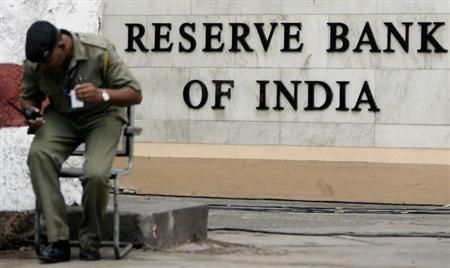 The Reserve Bank of India on Monday allowed banks to conduct deep restructuring of large accounts to revive projects that can be saved, effectively throwing a lifeline to promoters who risked losing their companies.
The Reserve Bank of India on Monday allowed banks to conduct deep restructuring of large accounts to revive projects that can be saved, effectively throwing a lifeline to promoters who risked losing their companies.
Banks are anyway struggling to dispose of many stressed assets they have already acquired and have no clue what to do next.
Accounts that are worth Rs 500 crore (Rs 5 billion) or more and have already started commercial operations will be eligible for the new recast scheme, titled 'Scheme for Sustainable Structuring of Stressed Assets.'
Only those promoters who have shown no malfeasance in their actions while running the show can ask for the permission to continue with the management, even if they get reduced to minority shareholders in the process.
R K Bansal, executive director, IDBI Bank, said the two sectors which would benefit are steel and power.
Some of the completed projects in these sectors were hit by external factors.
Deep restructuring is done to ensure long-term sustenance.
The strategic debt restructuring scheme was of limited use in such cases.
Under it, banks could convert debt into equity and take control of a company and sell off the assets.
However, if they were not able to dispose of the assets within 18 months, the lenders had to incur heavy provisions.
In about a dozen companies where banks invoked SDR, they have not found a single buyer, defeating the entire purpose of loan recovery and at the cost of running down the company, which often times could be just victims of economic downturn.
Stating the 18-month timeframe of SDR was not enough for making full provisions on large loans, banks had asked for more time, necessitating the new scheme, RBI said.
According to B Shriram, managing director, corporate banking, State Bank of India, the new scheme 'gives a second chance to the existing promoters, and helps banks restructure loans fast to protect the value of the assets.'
Under the new scheme proposed by the regulator, lenders will first segregate the existing debt of a company into 'sustainable' (the share which can be serviced by the company even if cash flow remains the same as now) and 'unsustainable'.
The restructuring exercise involves the unsustainable portion of the debt, which at the time of such recast should not be more than 50 per cent of the total debt.
An independent agency will have to conduct a techno-economic viability report to gauge the amount of the sustainable debt and any resolution plan should be agreed upon by a minimum of 75 per cent of lenders by value and 50 percent of lenders by number in the consortium.
As part of the resolution mechanism of the new plan, the unsustainable portion of the debt should be converted into equity/redeemable cumulative optionally convertible preference shares.
Banks should not grant any fresh moratorium on interest or principal repayment, or reduction of interest rate for servicing of the sustainable debt portion.
Both the promoters and the banks will have to take equal haircut in the process.
"Where the resolution plan does not involve a change in promoter or where existing promoter is allowed to operate and manage the company as minority owner by lenders, the principle of proportionate loss sharing by the promoters should be met," the guidelines said.
If there is no change in the existing management, the banks can also convert a portion of the unsustainable debt into coupon yielding debt instrument.
Equity shares thus acquired should be marked to market on a daily, or at least on a weekly basis for listed firms.
In case the company is not listed, banks should take the lowest value after working out a prescribed rule the central bank outlined.
The upside for the banks would be primarily their equity holdings if the restructured entity turns around.
In case a change of promoter takes place, banks will benefit from the asset classification norm as spelt in the SDR exercise.
However, if there is no change in management, the bank continues to incur heavy provisions, but they have a room to take into account the existing provisions made again the loan.
"There had to be a gradual relaxation in the norms that was introduced earlier as probably the regulator realized that the harsher measures were not working if the lender does not take part in the haircut and therefore the new norms have given some reprieve to the promoters," said Ashvin Parekh of Ashvin Parekh Advisory Services.
While the new scheme could save banks, projects and even promoters, analysts are not sure if it would not be used as another means for ever-greening loans, or giving a fresh loan to repay an old one.
"The banks will come out as the biggest beneficiary as it will give them a chance to clean up their balance sheet which was earlier bleeding.
"Now, it is upon the banks to differentiate between a good project and a bad promoter.
However, the banks will have to set the bar very high to ensure that they are not just delaying recognition of a bad loan but the chances of ever-greening of loans have cropped up again with these new rules," said a banking analyst requesting anonymity.
| SIGH OF RELIEF The RBI on Monday released new strategic debt restructuring norms. A few key takeaways: |
|












 © 2025
© 2025